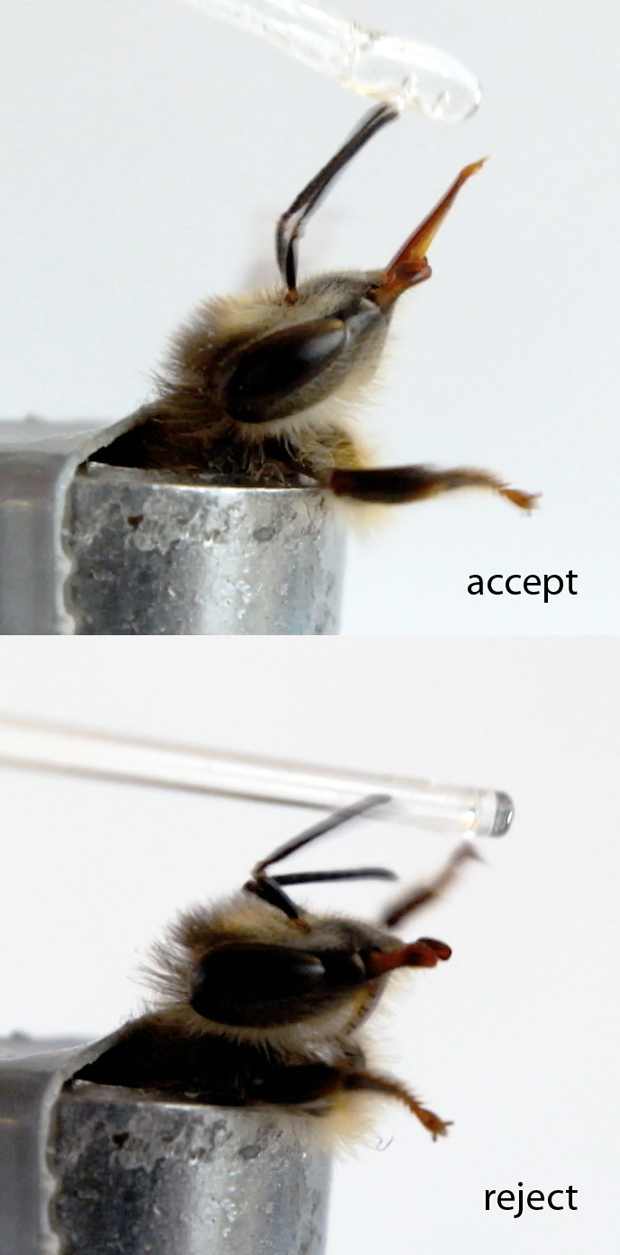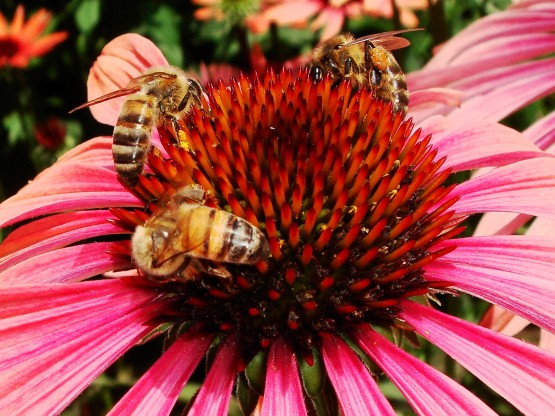Commonly Used Pesticide Turns Honey Bees into ‘Picky Eaters’
By:
- Kim McDonald
Published Date
By:
- Kim McDonald
Share This:
Article Content
Biologists at UC San Diego have discovered that a small dose of a commonly used crop pesticide turns honey bees into “picky eaters” and affects their ability to recruit their nestmates to otherwise good sources of food.
The results of their experiments, detailed in this week’s issue of the Journal of Experimental Biology, have implications for what pesticides should be applied to bee-pollinated crops and shed light on one of the main culprits suspected to be behind the recent declines in honey bee colonies.
Since 2006, beekeepers in North America and Europe have lost about one-third of their managed bee colonies each year due to “colony collapse disorder.” While the exact cause is unknown, researchers believe pesticides have contributed to this decline. One group of crop pesticides, called “neonicotinoids,” has received particular attention from beekeepers and researchers.
The UC San Diego biologists focused their study on a specific neonicotinoid known as “imidacloprid,” which has been banned for use in certain crops in some European countries and is being increasingly scrutinized in the United States.
“In 2006, it was the sixth most commonly used pesticide in California and is sold for agricultural and home garden use,” said James Nieh, a professor of biology at UC San Diego who headed the research project with graduate student Daren Eiri, the first author of the study. “It is known to affect bee learning and memory.”
The two biologists found in their experiments that honey bees treated with a small, single dose of imidacloprid, comparable to what they would receive in nectar, became “picky eaters.”
“In other words, the bees preferred to only feed on sweeter nectar and refused nectars of lower sweetness that they would normally feed on and that would have provided important sustenance for the colony,” said Eiri. “In addition, bees typically recruit their nestmates to good food with waggle dances, and we discovered that the treated bees also danced less.”

Using an ascending range of sugar water from 0 to 50 percent, the researchers touched the antennae of each bee to see if it extended its mouthparts. Credit: Daren Eiri
The two researchers point out that honey bees that prefer only very sweet foods can dramatically reduce the amount of resources brought back to the colony. Further reductions in their food stores can occur when bees no longer communicate to their kin the location of the food source.
“Exposure to amounts of pesticide formerly considered safe may negatively affect the health of honey bee colonies,” said Nieh.
To test how the preference of sugary sources changed due to imidacloprid, the scientists individually harnessed the bees so only their heads could move. By stimulating the bees’ antennae with sugar water, the researchers were able to determine at what concentrations the sugar water was rewarding enough to feed on. Using an ascending range of sugar water from 0 to 50 percent, the researchers touched the antennae of each bee to see if it extended its mouthparts. Bees that were treated with imidacloprid were less willing to feed on low concentrations of sugar water than those that were not treated.
The biologists also observed how the pesticide affected the bees’ communication system. Bees communicate to each other the location of a food source by performing waggle dances. The number of waggle dances performed indicates the attractiveness of the reward and corresponds to the number of nestmates recruited to good food.
“Remarkably, bees that fed on the pesticide reduced the number of their waggle dances between fourfold and tenfold,” said Eiri. “And in some cases, the affected bees stopped dancing completely.”
The two scientists said their discoveries not only have implications for how pesticides are applied and used in bee-pollinated crops, but provide an additional chemical tool that can be used by other researchers studying the neural control of honey bee behavior.
The study was funded by the North American Pollinator Protection Campaign and the National Science Foundation.
Share This:
Stay in the Know
Keep up with all the latest from UC San Diego. Subscribe to the newsletter today.




